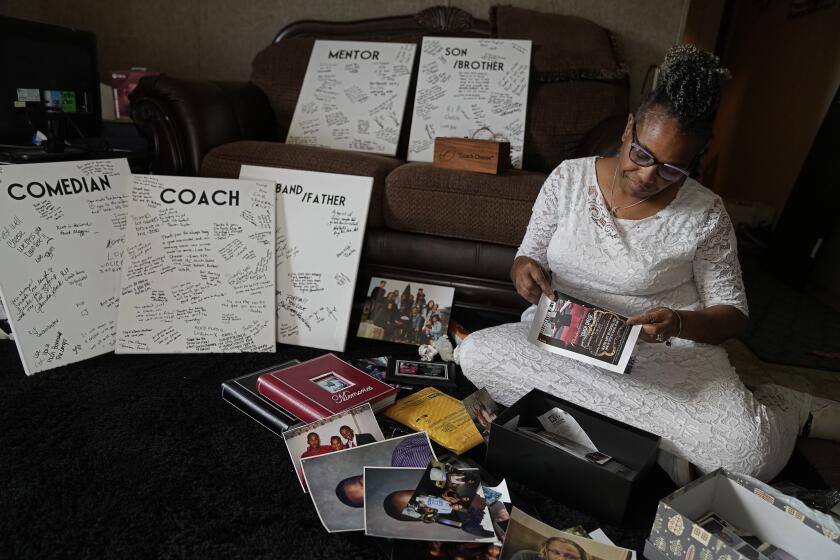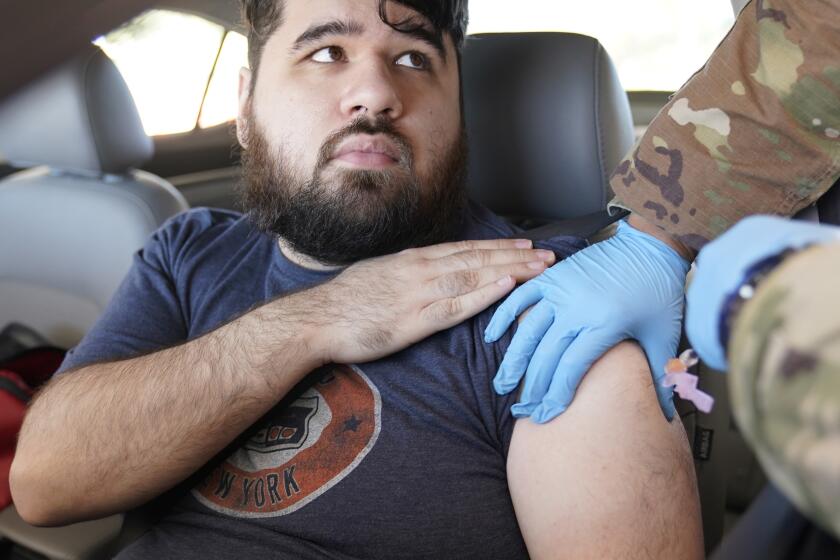U.S. health tab hit $4.1 trillion as government fought COVID

WASHINGTON — U.S. healthcare spending rocketed to $4.1 trillion last year as Congress opened the spigot of federal dollars to battle the COVID-19 pandemic across multiple fronts.
A government report out Wednesday said national health spending jumped by 9.7% in 2020 — more than double the usual growth rate — with healthcare accounting for nearly $1 of every $5 in the economy. The federal government share of health spending increased by 36%.
In a twist, that growth was driven not so much by care devoted to patients, but by federal subsidies to keep hospitals and medical providers solvent; funding to develop and deploy COVID-19 tests, vaccines, treatments and countermeasures; and assistance to state Medicaid programs facing a potential wave of uninsured people in a public health crisis.
“The story that unfolded in 2020 and continues today is unlike anything that has happened in the past 100 years,” said the report by number crunchers at the Centers for Medicare and Medicaid Services.
Published online by the journal Health Affairs, the report is an annual yardstick measuring healthcare’s impact across the economy.
Last year, as elective surgeries got canceled and telehealth replaced office visits, Congress overwhelmingly approved bipartisan measures that pumped out tens of billions of dollars to keep the private healthcare system from collapsing.
Along with direct federal spending on COVID-19 countermeasures and the Medicaid money for states, the strategy largely worked, said economist Douglas Holtz-Eakin, a former director of the nonpartisan Congressional Budget Office and longtime policy advisor to Republicans.
The U.S. has the highest number of COVID deaths as it nears the end of an especially difficult year for families who lost loved ones in the pandemic.
“The COVID cases precluded the hospitals from having their usual book of business,” Holtz-Eakin said. “The bailout money from the federal government was really important when the other sources just dried up.”
A $122-billion Provider Relief Fund, through which hospitals could apply for taxpayer money to offset their losses, was the linchpin.
“When I look at 2020, it wasn’t perfect, but I think Congress deserves high marks for what they got done,” Holtz-Eakin added.
The $4.1-trillion tab for 2020 represents an increase of about $365 billion from national health spending in 2019. It works out to $12,530 per person.
With immunity waning and the Omicron variant looming, many scientists are saying the definition of ‘fully vaccinated’ should include a booster shot.
In other highlights, the report found:
• The number of uninsured people did not balloon with job losses, but held fairly steady at around 30 million. That confirms earlier reports from the Census Bureau. However, there was a shift in coverage, with fewer people covered through the workplace and more people getting their healthcare through Medicaid and the Affordable Care Act marketplaces.
• Medicare rolls grew more slowly in the first year of the pandemic, but part of the reason was that people were dying. “The deceleration was driven in part by increased mortality in the population age 65 and older on account of the pandemic,” the report said. Seniors accounted for 14% of COVID-19 cases, but 80% of deaths.
• Increased federal Medicaid funding helped ease the financial burden of the pandemic on state and local governments. Healthcare spending financed at the state and local level decreased by about 3% in 2020. The federal share of Medicaid spending was about 69% in 2020, the highest percentage in the 50-plus years of the program.
• Out-of-pocket healthcare spending by individuals declined by 3.7%, a rare occurrence. That was largely due to postponed surgeries, dental care and diagnostic procedures such as colonoscopies. Employers who finance health insurance coverage for their workers also spent less.
The first full year of the biggest vaccination drive in American history has saved many lives but has left many behind.
“The bipartisan federal relief effort in 2020 was critical to shoring up the U.S. health system and helping millions of people stay insured during a national public health emergency — these data provide the hard evidence,” said health economist Sara Collins of the nonpartisan Commonwealth Fund, which works to expand access. “This is absolutely a story of a sweeping bipartisan federal relief effort that worked.”
But this year, Americans are politically polarized over vaccine mandates and mask requirements, and COVID-19 is likely to have a continuing impact on U.S. healthcare spending.
“There will likely be notable effects from the widespread vaccination efforts that began in the spring of 2021 and from the emergence of the Delta variant in the summer,” the report said. “Uncertainty remains regarding how the pandemic may evolve during the winter months given the emergence of the Omicron variant.”
More to Read
Sign up for Essential California
The most important California stories and recommendations in your inbox every morning.
You may occasionally receive promotional content from the Los Angeles Times.













